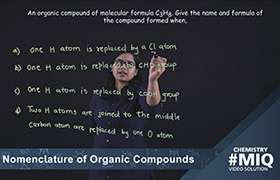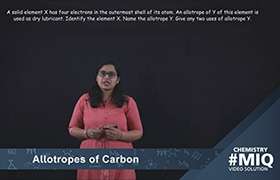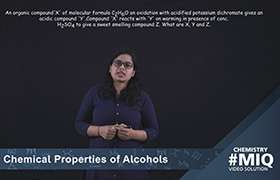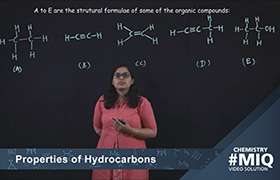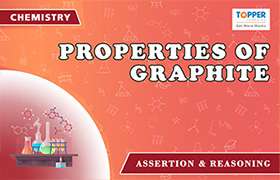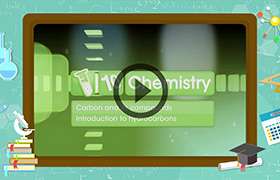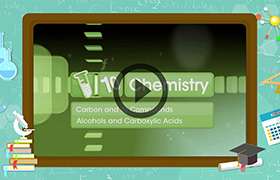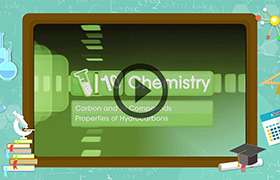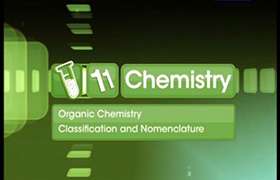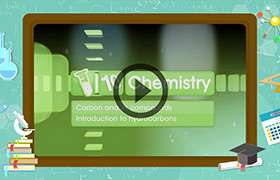CBSE Class 10 Answered
Explain the following reactions with examples:
Addition reaction,
Substitution reaction,
Combustion reaction.
Asked by Shubhi Gupta | 17 Nov, 2013, 10:56: PM
Substitution reaction:
- The reaction in which one or more hydrogen atoms of a hydrocarbon are replaced by some other atoms is called a substitution reaction.
- Substitutions reactions are a characteristic property of saturated hydrocarbons (Alkanes).
- For example: Methane reacts with chlorine in the presence of sunlight to form chloromethane and hydrogen chloride.
Where, R is an alkyl group.
Addition reaction:
- The reaction which involves direct addition of an attacking agent, across the double or triple bonds are called addition reactions.
- An unsaturated hydrocarbon combines with another substance to give a single product.
- Addition reaction like the addition of hydrogen, chlorine or bromine are a characteristic property of unsaturated hydrocarbons.
- This reaction occurs only in unsaturated compounds where there are double or triple bonds.
e.g.
Combustion Reaction:
- Combustion or Burning is a chemical change in which combustible substances combine with oxygen to produce new products called oxides with the liberation of heat and light.
- It is an exothermic reaction.
For example combustion of methane is given as under
CH4 + 2O2 → CO2 + 2H2O
Magnesium combines with oxygen to form white colour magnesium oxide with liberation of some amount of heat.
Answered by Hanisha Vyas | 18 Nov, 2013, 11:27: AM
Application Videos
Concept Videos
CBSE 10 - Chemistry
Asked by parthmarch1 | 14 Dec, 2023, 08:27: PM
CBSE 10 - Chemistry
Asked by reetritu34 | 14 Dec, 2023, 07:54: AM
CBSE 10 - Chemistry
Asked by agarwalkrishnam98 | 01 Oct, 2023, 08:28: AM
CBSE 10 - Chemistry
Asked by asra964072 | 18 May, 2022, 10:03: PM
CBSE 10 - Chemistry
Asked by jainnikhil668 | 05 May, 2022, 02:00: PM
CBSE 10 - Chemistry
Asked by gsvjairam | 17 Apr, 2022, 11:32: AM
CBSE 10 - Chemistry
Asked by shubham.sharma80634 | 10 Feb, 2022, 08:43: PM
CBSE 10 - Chemistry
Asked by Trisha Gupta | 25 Jan, 2022, 03:02: PM
CBSE 10 - Chemistry
Asked by Trisha Gupta | 25 Jan, 2022, 03:01: PM
CBSE 10 - Chemistry
Asked by sivaramaraju1000 | 21 Jan, 2022, 09:05: AM

